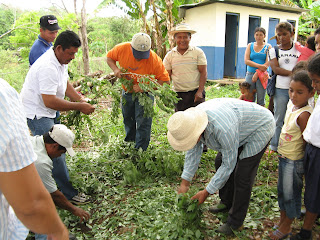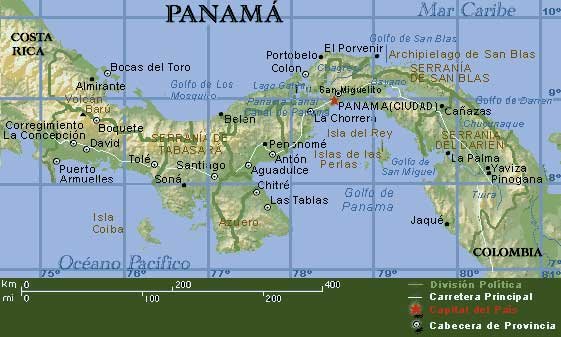Well, most of you know that I LOVE to read. When I was a kid I used to use the light unit from my small microscope for a reading light under the covers in my room so my parents wouldn´t know that I was reading in bed. I stole and swapped batteries from all sorts of things to feed my night time habit. I remember sweating under a blanket in the summer to keep the light dimmed so Mom wouldn´t see it. (Sorry Mom and Dad...I don´t know if you knew all this.) Anyway...I love to read. I am currently averaging a book a week here in Panamá (Volunteers swap books like crazy to feed our need for books...there are always books getting swapped at our events, so my drug of choice -fiction- is free here.) Heck, all the people in my community know that I read a lot.
Needless to say, it was a shocker to realize that it was very likely that no one was reading to these kids in my community. They only read school books...and not always that. I found myself thinking ¨How can a society grow if it´s people don´t read? How can someone grow into an adult that looks to the writen word for ideas and knowledge if they aren´t introduced to it in youth? How do you get beyond the realities offered by the news media if you don´t know how to access other forms of information?
So I decided to encourage an interest in books and reading. I decided to start reading small books in Spanish to the kids of my community. Every Tuesday that I am on the island I go to the school and we have ¨Hora de Historia¨ or story hour.

April reading about why eating vegetables is important to your health.
The result...the kids run to greet me when I come to the school. They wiggle outside the empty classroom until I open the door. They beg thier teacher to be one of the grades that can go to story time this week (they have to have finished thier work to get to go). They tell me which books they like.

April doing a listening activity between stories.
We structured the hour very simply. They sit on the floor after sweeping it (so it feels different from thier classes). They crowd around me until I feel a bit clausterphobic. I read two small books with a calm activity between the two. I get help wih the long Spanish words from the older kids. Helping me with pronunciation ensures that they are following allong and builds their confidence in thier reading too. One of my goals is to get the 6th graders to read to the younger kids...so that they practice and the activity is sustainable even after I leave. They remember our basic rules and we review them each week:- Only clean hands can touch the books.
- No writing or drawing in books.
- No tearing or damaging our books.
- Big ears and small mouths are good. Small ears and big mouths are bad.
- You need to be sitting to be in storytime room (this one flexs a bit as they stand in the back to see over thier peers).


How the story time rules look on our board...easy for readers and non-readers to understand. Enforcing the rules is easy...I just have to remind them that being in story time is not mandatory and they can leave if they don´t want to be there. That calms them right down because they DO want to be there.
I am also hoping to work with the community to raise funds to start a small library of books for youth in Spanish. Two books a week, even with repititions, will go through my little collection of books pretty quickly. I did manage to talk a publisher of kids books to give us (and all of Peace Corps in Panamá) a 30% discount on all of thier books. I just wish that some of the books I loved as a kid were in Spanish...some are, but translating Shel Silverstien would just loose something.
If you haven´t noticed the tally list of books we have read while here in Panamá, check out the lower right hand collum of the blog home page (but remember...we are really working here too!). We even scored them to indicate which ones are good. I would especially recommend: The Earth Moved, The Tipping Point, Snow Falling on Ceders, and one I really liked: Bel Canto by Ann Patchett. Good reading to all!














 The idea is that after every deposit you cover the poo with dry organic material to balance moisture and to prevent insect interest. The organic cover material also prevents odors. I know it is hard to believe, but you could stand next to our tank and either smell nothing or a slight smell of damp sawdust on humid days. We had very few problems with odors or insects…much less than the typical pit latrine (and we now have plenty of pit latrine experience for comparing).
The idea is that after every deposit you cover the poo with dry organic material to balance moisture and to prevent insect interest. The organic cover material also prevents odors. I know it is hard to believe, but you could stand next to our tank and either smell nothing or a slight smell of damp sawdust on humid days. We had very few problems with odors or insects…much less than the typical pit latrine (and we now have plenty of pit latrine experience for comparing).






